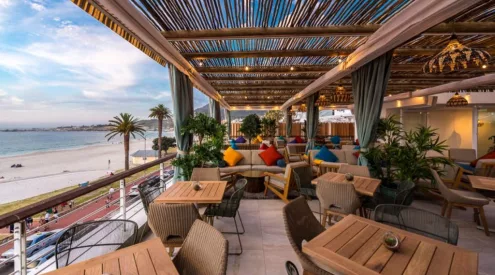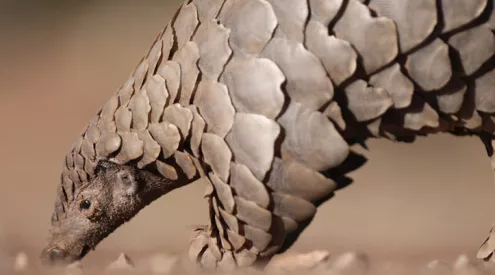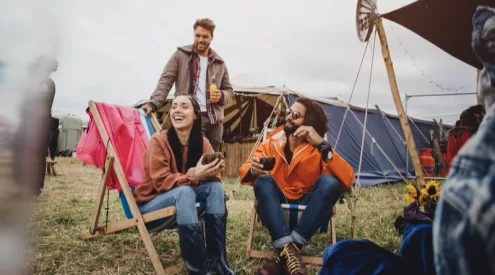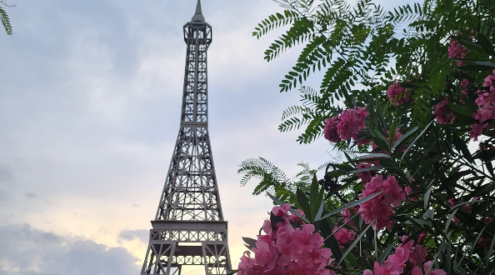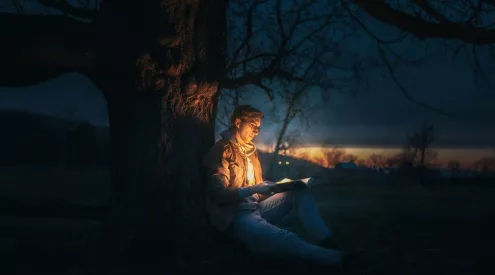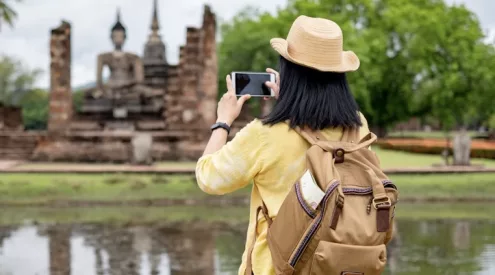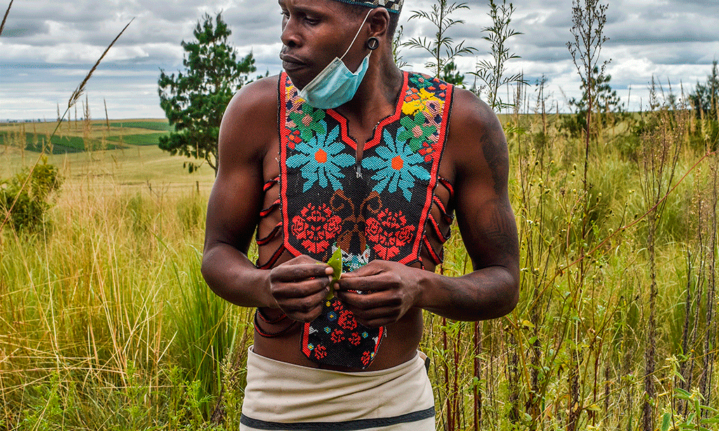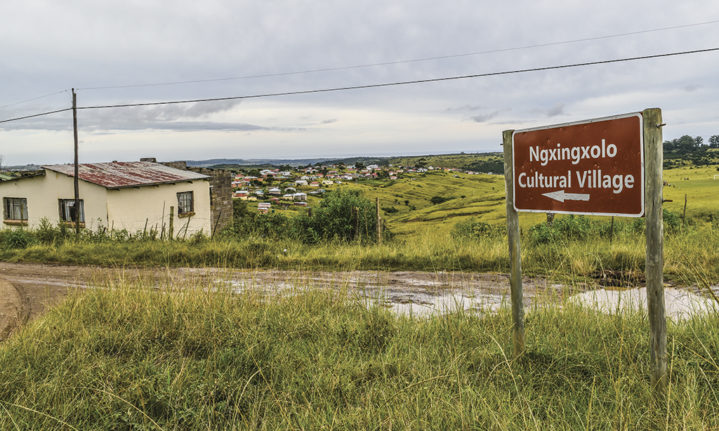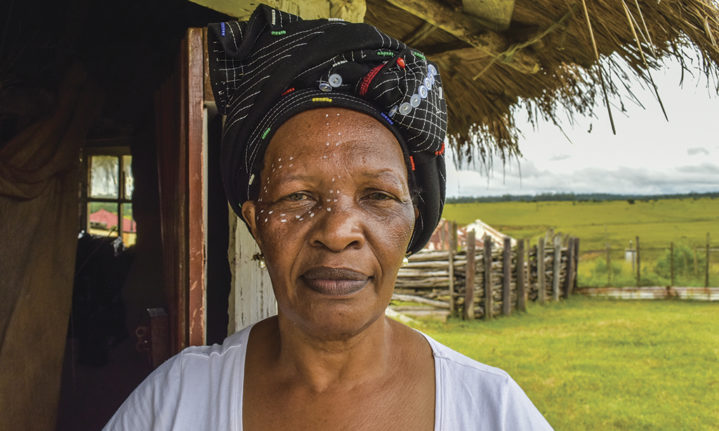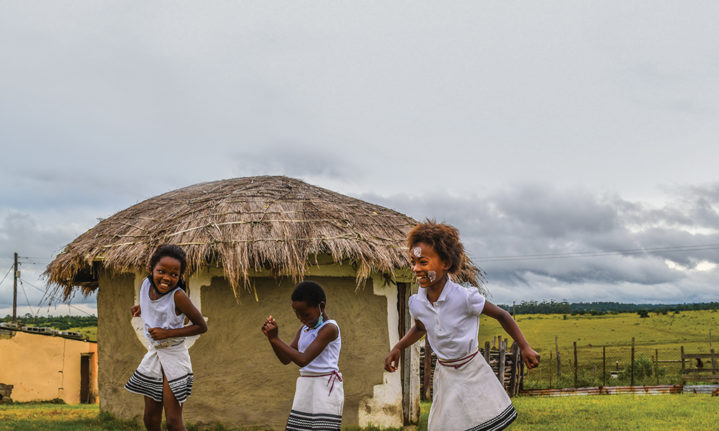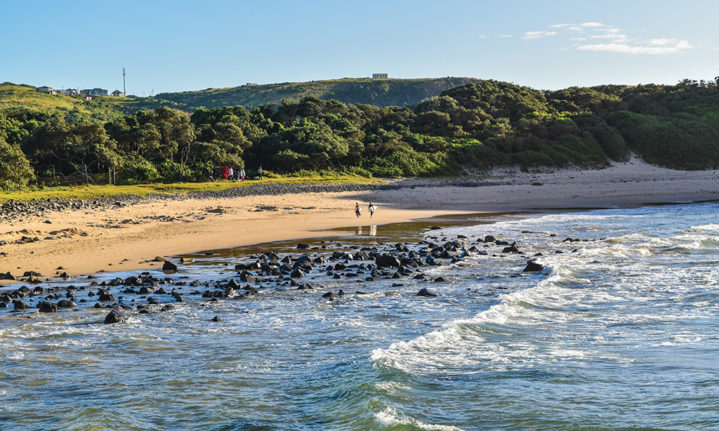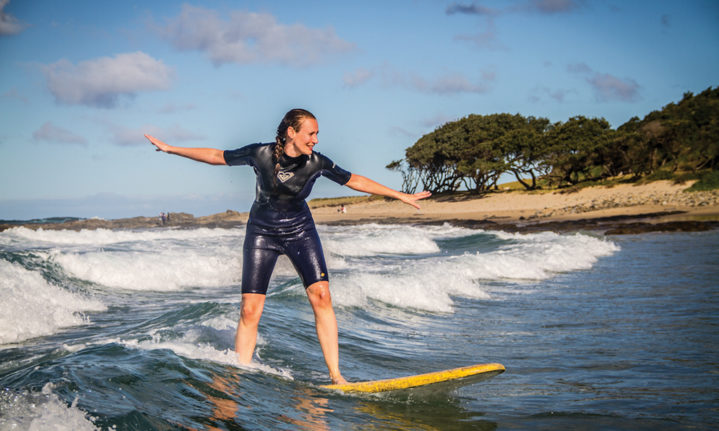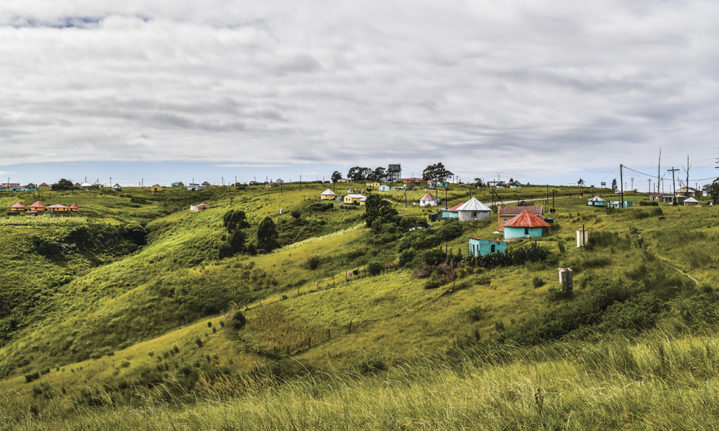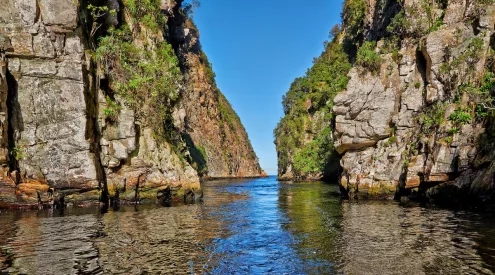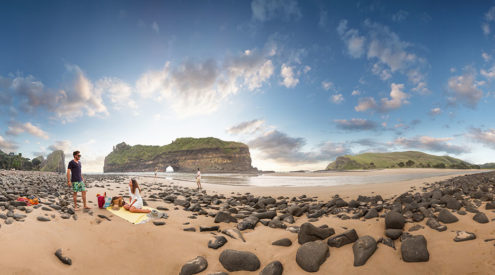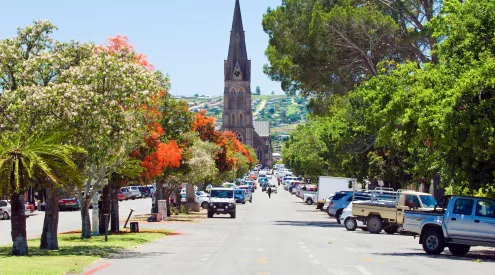Forget hippie drum circles in the Mother City, if you want real drumming action and a taste of Xhosa culture, head to the Eastern Cape. Elise Kirsten visited three rural villages and came away richer for the experience.
Words: Elise Kirsten | Photography Elise Kirsten/supplied

Cheerfully coloured rondavels pepper the hills surrounding Coffee Bay.
Andile Mndende is a proud and enthusiastic young Xhosa man. Good-looking and articulate, his passion for his culture is infectious. When I met him at the Icamagu Heritage Institute outside Dutywa, he was wearing a striking black-and-red breastplate, made of thousands of tiny beads.
I’d seen beaded Xhosa bracelets, necklaces, headbands and even knobkerries (walking sticks) before, but never such an elaborate ephod. Complimenting his garment, I asked Andile where he got it. Grinning with a smile that wouldn’t be out of place on Netflix, he said: ‘I made it.’

Andile Mndende shares his knowledge of traditional Xhosa herbal remedies, spirituality and culture – gleaned from his mother, Dr Nokuzola Mndende.
His breastplate prompted a recollection of playing with my mother’s beads on the carpeted bedroom floor as a young child. I’d run my fingers over the surface of each string. Some beads were smooth and round, others elongated with decorative inlays. Each unique combination evoked a different emotion.
Beads have been present in almost every culture for adornment, status or ritual, going back almost as far as people do. Shells, seeds, ivory and bone were used first, while blue lapis lazuli stone beads were discovered in tombs in Ur, in Mesopotamia (now Iran), one of the world’s earliest civilizations. Venetian glass beads made their way to Africa and North America via European settlers in the 1800s and Xhosa people traded with the British to acquire these.

The thatched rondavels at Coffee Shack Backpackers are situated across the Bomvu River, offering bolt-holes away from the energetic main hostel and campsite.
Andile explained: ‘The patterns were revealed to me in my dreams. I decided to make them modern, so I created a black background, which helps the colours stand out. In the past, the colours held significance and people would avoid black as it represented death. However, in modern times the colours don’t have any meaning and black is used quite often to offset other colours. It’s all about the look and design.’
I was visiting the Eastern Cape with a group from South African Tourism and the Eastern Cape Tourism Agency. Velile Ndlumbini, owner of Imonti Tours, was our guide. He led us expertly through village warrens to reach local homes for a number of cultural experiences, as well as to the Icamagu Heritage Institute.
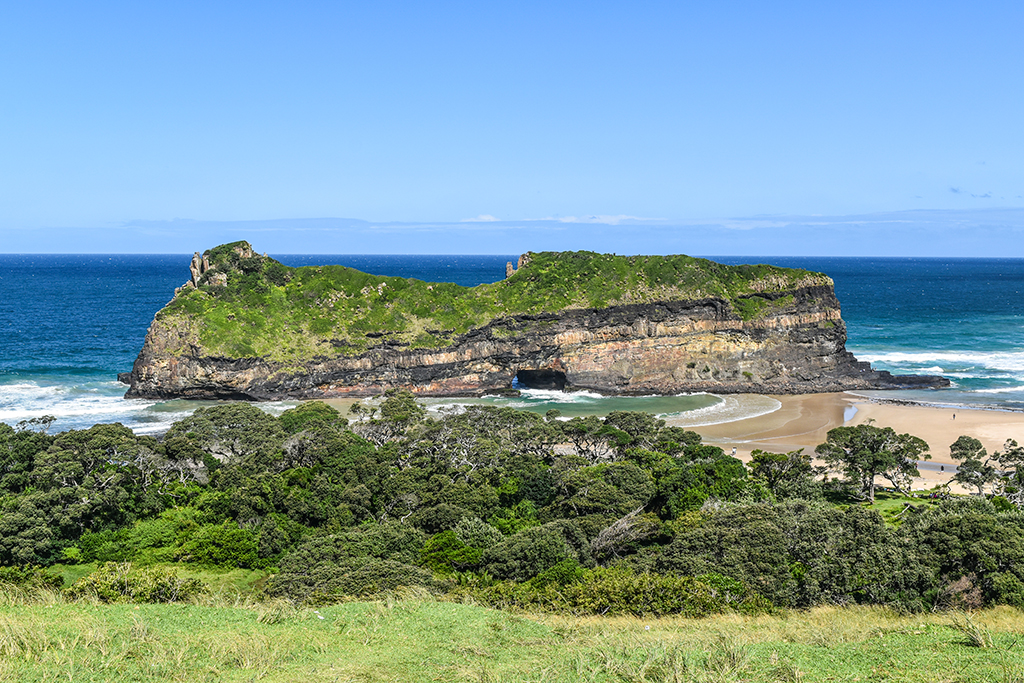
Hole in the Wall is a spectacular natural landmark near to Coffee Bay, which is well worth the visit.
He told us that when these beads first arrived in Africa, the only colours available were white, navy blue and powder blue. Women would make decorative items for their husbands and lovers. Men who didn’t have partners began paying for beadwork, which is how the Xhosa beading industry began. Later men began beading, too.
After explaining interesting facets of Xhosa heritage, in a rondavel filled with traditional items, Andile led us outside to a garden where indigenous plants – used as herbal remedies and in ceremonies – grew freely. ‘This plant, isivumba mpunzi (Tulbaghia sp), is planted near the entrance of homes and is used as a snake repellent.
‘It’s a wild garlic and the words isivumba mpunzi translate to “smell of buck”, as it was used by hunters in the past to season springbok meat.’
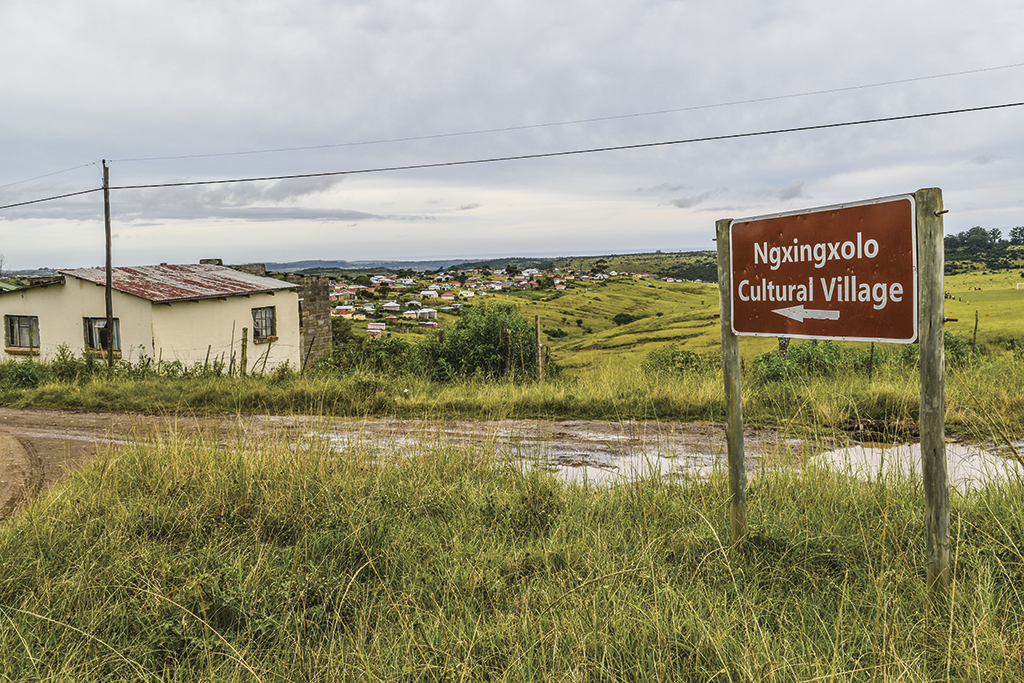
The Ngxingxolo Cultural Village was pioneered by Xhosa cultural activist Winifred Tofu (who died at 96) to showcase authentic Xhosa culture.
We found ourselves at the Ngxingxolo Cultural Village near East London the next day, where we met Mamma Zinzi Tofu. A solemn Xhosa woman, she prides herself on passing on her heritage to a younger female generation. Young girls, wearing embroidered skirts, with white beadwork on the trim, welcomed us enthusiastically with singing and clapping. They ushered us into the complex – a grassy area ringed by a collection of huts, a rudimentary stage and a kraal.
Following the exuberant welcome, Mamma Zinzi and the girls stepped onto the outdoor stage that stood against a backdrop of hills, covered in long feathery grass, and the village soccer field. Drumming, clapping and dancing began, the rhythm magnified by the sound of the girls’ voices. Jumping forward two at a time, their vibrant jiggling exuded the heartbeat of Africa with every move. Mamma Zinzi’s dancing displayed equal fervour despite her muttering something about her age.
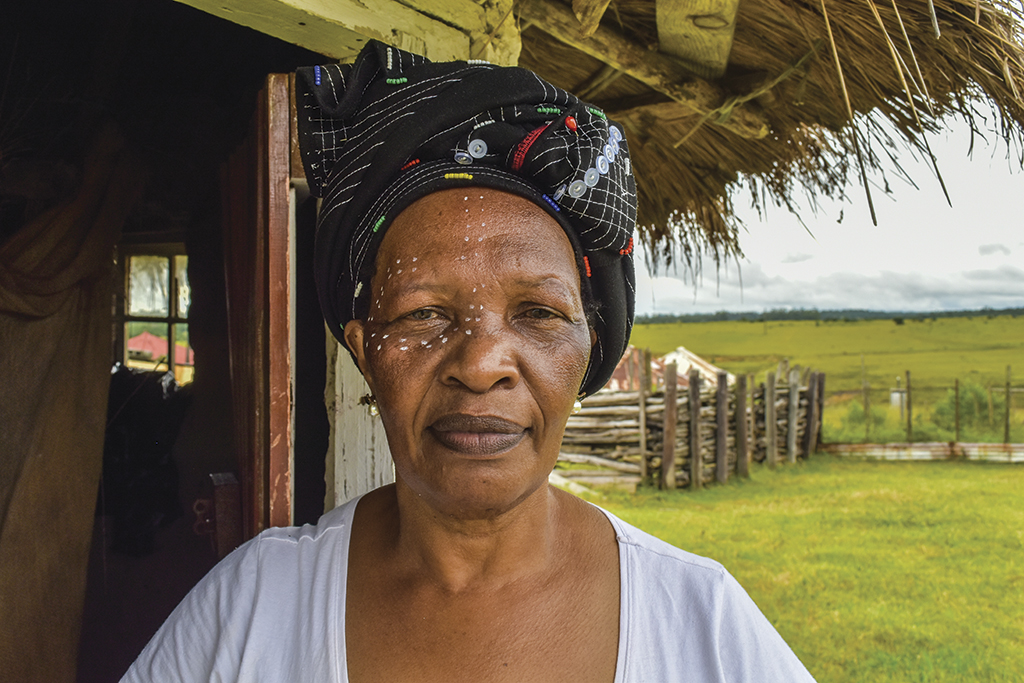
Zinzi Tofu succeeded her mother, Winifred. She now manages the cultural village and takes satisfaction in sharing her Xhosa heritage with South African and international visitors.
The matriarch stepped forward and removed her covering bib and apron to show what an unmarried, Xhosa girl would wear. She was left wearing a long skirt with a small slit in the front. ‘In Xhosa culture, if you are not married you are a girrrl. It doesn’t matter what age you are, you are a girl. I am a girl,’ said Mamma Zinzi emphatically, pointing to her outfit. ‘But, coming to someone who is married, you will see they will have a third skirt and also a bib here and also an apron,’ she explained, indicating how these additional items are worn.
Later, we crossed the Kei River by pont in our vehicles. It’s one of only three spots in South Africa where your car can be transported across a river. We were on our way to the village of Qolora. At a cluster of colourful homes, we were shown how to carry a bundle of firewood on our heads and how to crush maize using a mammoth pestle and mortar.
I managed to carry the sticks a short distance, but I was told that my maize-grinding efforts scored a pitiful two out of 10. More drumming, singing and dancing ensued as we relaxed on the dirt floor of a brightly painted rondavel.
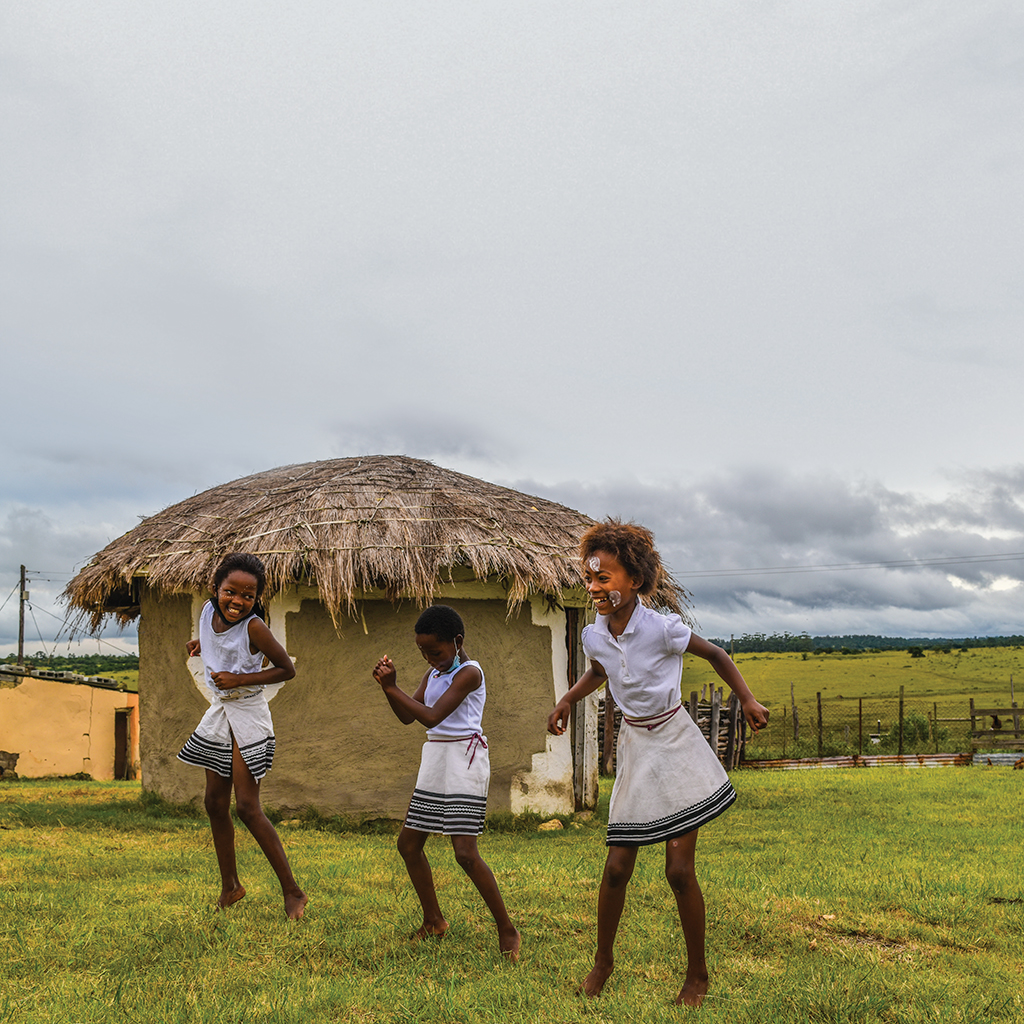
Xhosa girls continued to dance offstage and would then run to see the photos on my camera’s digital display.
By my penultimate day on the Wild Coast, I had a better sense of the culture in this remarkable land. I crossed the Bomvu River on foot, at the point where it narrows to a trickle, as I made my way from my quirky rondavel to the main lodge at Coffee Shack Backpackers.
The communal table outside was filled with an eclectic mix of people made up of locals and foreigners, typical of a backpackers lodge. I chatted to a smiling Belgian with a bulbous nose, who showed me photos of his recent hike to the top of the Drakensberg’s Tugela Falls. ‘This is my fifth time in South Africa. I love it,’ he said. My attention turned to an attractive, chain-smoking French girl in her 20s. She puffed away nonchalantly as she took in the scene.
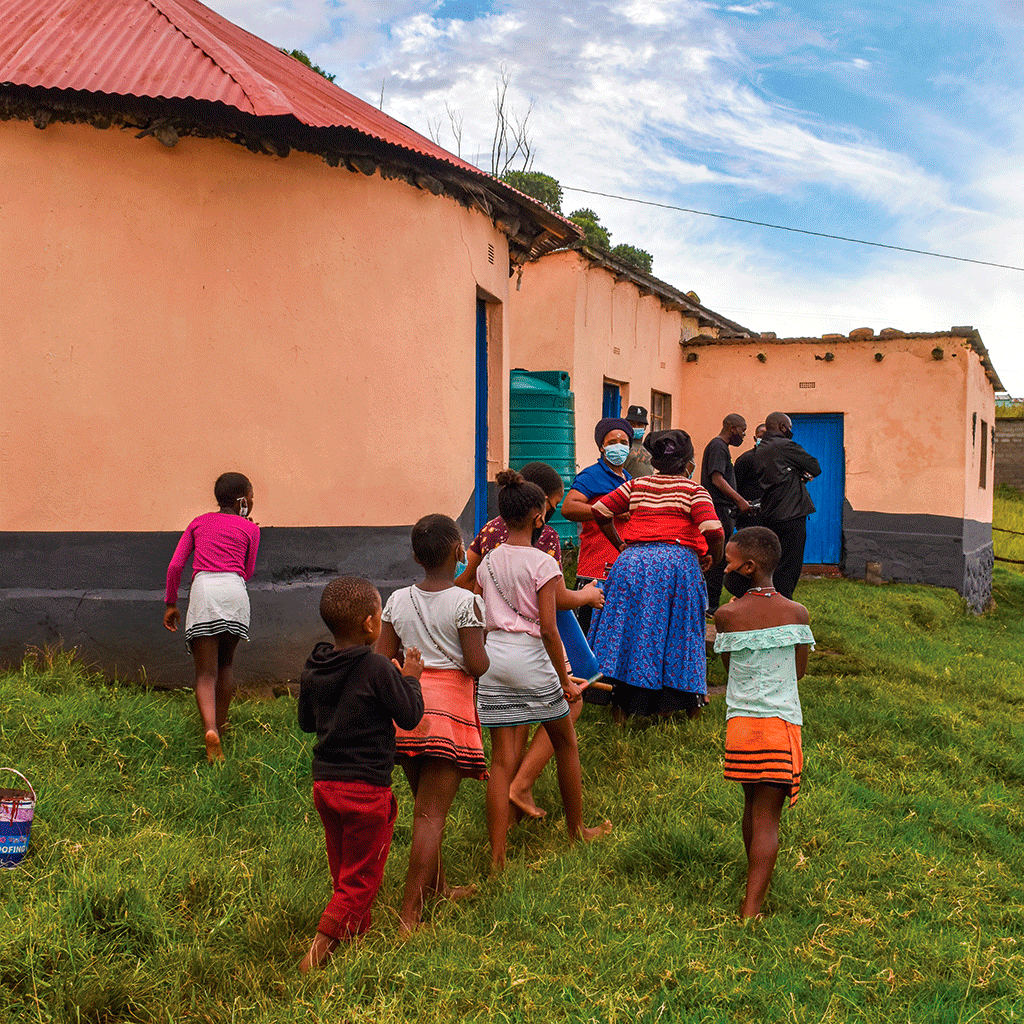
The austere living conditions are juxtaposed with vibrantly-coloured houses and clothing in Qolora village.
After a dinner of chicken stew, musicians took their seats and the drumming began. Instantly the energy surged and everyone was invited to dance, alongside an effulgent fire. Laughter wafted on the evening breeze as a bunch of us tried (rather unsuccessfully) to imitate the locals who invited us to shimmy with them.
When I’d had my fill of revelry, I walked back to my rondawel, passing along the way a large selection of Xhosa beadwork made by Coffee Bay locals. They were hanging on wooden hooks in an outdoor enclave, which acted as a shop for backpackers, a kaleidoscope of more than 100 necklaces and bracelets. I stopped and ran my fingertips over the fine, smooth spheres, moving across each tiny bead and into the minute recesses between them.
This reminded me of a visit to the Wild Coast when I was a child, on a family holiday. I recalled the wonder of discovery I felt when I was taken to a Xhosa cultural village for the first time. Seeing, touching and then buying an item of this beadwork was as magical then as it seemed now. I realised that each item hanging here held within it a dream, inspiration, emotion and a story, just like Andile’s breastplate.

Trip Planner
Getting there
Fly or drive to East London. From East London, head north to the N2 and continue north. Turn right onto the R349 and right again, about 1.5km later, to reach Ngxingxolo. The R349 takes you to the Kei River and on to Qolora. Dutywa is on the N2 heading towards Mthatha. To get to Coffee Bay from East London, take the Coffee Bay/Mqanduli exit 20km before reaching Mthatha.

Surfers make their way back along the rocky Bomvu Beach after a surf.
Stay Here
Coffee Shack Backpackers, COFFEE BAY Pick a traditional thatched rondavel with a double bed; other options include camping facilities, dorm accommodation, family rondavels and the private King’s House, which sleeps up to eight. From R480 per night.
047 575 2048, coffeeshack.co.za
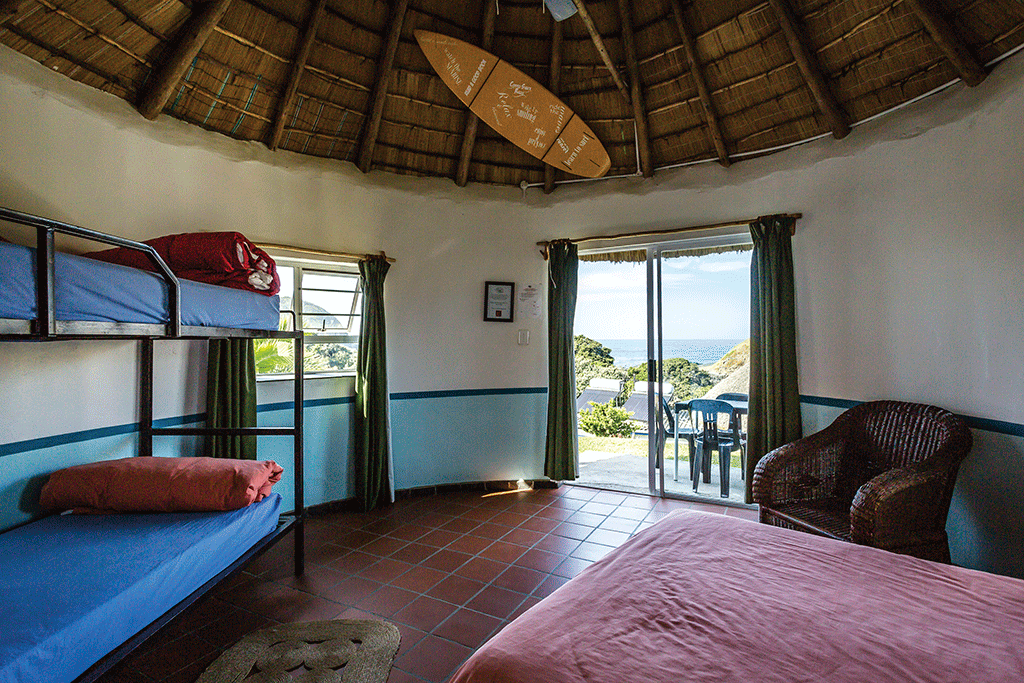
Coffee Shack Backpackers
Morgan Bay Hotel, Morgan Bay
Recently renovated, the Morgan Bay Hotel is among the nicest along the Wild Coast. The family-friendly establishment has wonderful views across the bay and two good restaurants, with vegan options. From R875 pps.
043 841 1062, morganbayhotel.co.za
Seagulls Beach Hotel, Qolora Mouth
This relaxed beach hotel is a place for traipsing from the beach to the pool and back, on repeat. The restaurant offers freshly caught seafood and buffet breakfasts.
From R1 000 pps.
047 101 0071, seagullshotel.co.za

Bomvu Beach, Coffee Bay
Ngxingxolo Cultural Village, Ngxingxolo
To experience rural life as a local, Ngxingxolo Cultural Village provides simple accommodation in rondawels. Ablutions consist of wash basins and pit latrines.
From R400 pps.
063 436 7178 (Zonzi Tofu)
Do this
Learn to surf in Coffee Bay Former pro surfer and head surf coach at Coffee Shack Backpackers Dave Malherbe knows the best surfing spots along this coast.
047 575 2048, coffeeshack.co.za
Hike along the Wild Coast
There is an abundance of hiking experiences to choose from along the Wild Coast, from slackpacking to roughing it. The five-day hike from Port St Johns to Coffee Bay, or three- or five-day trails in Pondoland, which pass Waterfall Bluff, are popular choices.
033 329 5259, active-escapes.co.za
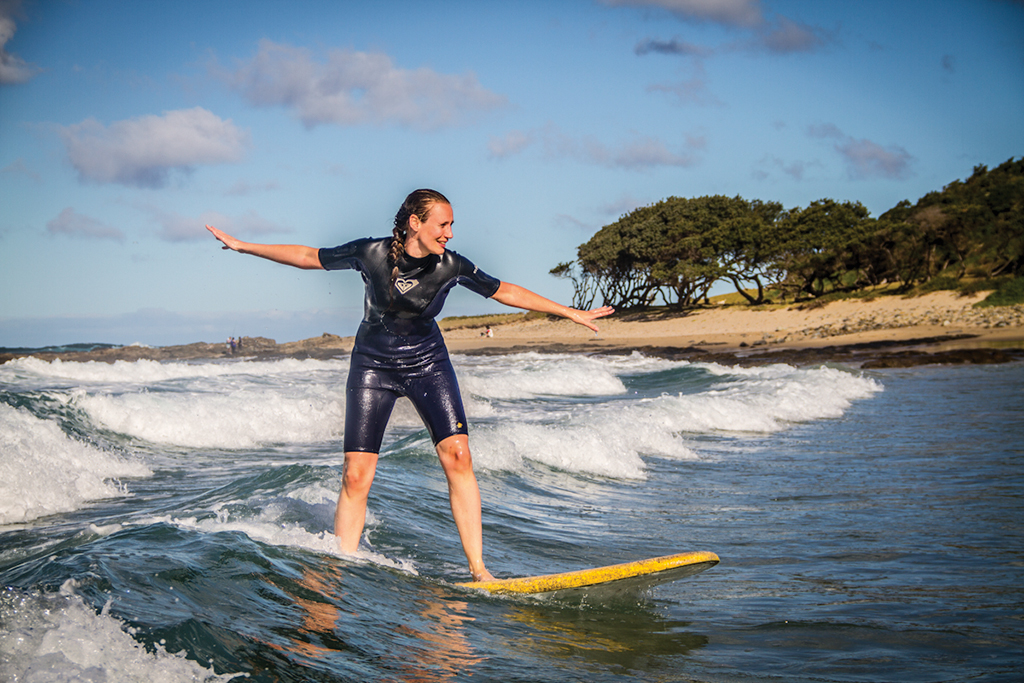
Learning to surf on the Wild Coast at Coffee Bay
Employ a local guide
Imonti Tours, based in East London, offers multiple tours ranging from rural cultural experiences and hikes along the Wild Coast, to inner city and township tours.
078 562 5416, imontitours.co.za



